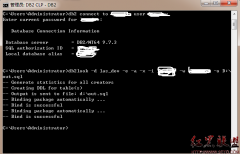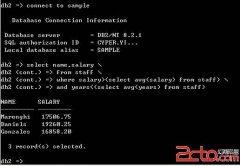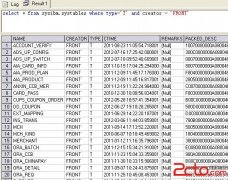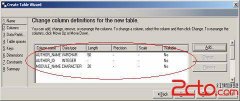性能比较工具runstats
来源:未知 责任编辑:责任编辑 发表时间:2013-12-18 11:37 点击:次
runstats能对做同一件事的两个不同方法进行比较,得出谁好一点。我们只需要提供两个不同方法,余下的事情都由runstats负责。runstats只是测量3个要素:
1. 耗用的时间。
2. 系统统计结果:会并排地显示每个方法做某件事(如执行一个解析调用)的次数,并展示二者之差。
3. latching,这是报告关键的输出。
安装过程:
create global temporary table run_stats
( runid varchar2(15), name varchar2(80), value int ) on commit preserve rows; create or replace view stats as select 'STAT...' || a.name name, b.value from v$statname a, v$mystat b where a.statistic# = b.statistic# union all select 'LATCH.' || name, gets from v$latch union all select 'STAT...Elapsed Time', hsecs from v$timer; create or replace package runstats_pkg as procedure rs_start; procedure rs_middle; procedure rs_stop( p_difference_threshold in number default 0 ); end; / create or replace package body runstats_pkg as g_start number; g_run1 number; g_run2 number; procedure rs_start is begin delete from run_stats; insert into run_stats select 'before', stats.* from stats; g_start := dbms_utility.get_time; end; procedure rs_middle is begin g_run1 := (dbms_utility.get_time-g_start); insert into run_stats select 'after 1', stats.* from stats; g_start := dbms_utility.get_time; end; procedure rs_stop(p_difference_threshold in number default 0) is begin g_run2 := (dbms_utility.get_time-g_start); dbms_output.put_line ( 'Run1 ran in ' || g_run1 || ' hsecs' ); dbms_output.put_line ( 'Run2 ran in ' || g_run2 || ' hsecs' ); if ( g_run2 <> 0 ) then dbms_output.put_line ( 'run 1 ran in ' || round(g_run1/g_run2*100,2) ||'% of the time' ); end if; dbms_output.put_line( chr(9) ); insert into run_stats select 'after 2', stats.* from stats; dbms_output.put_line ( rpad( 'Name', 30 ) || lpad( 'Run1', 12 ) ||lpad( 'Run2', 12 ) || lpad( 'Diff', 12 ) ); for x in ( select rpad( a.name, 30 ) || to_char( b.value-a.value, '999,999,999' ) ||to_char( c.value-b.value, '999,999,999' ) || to_char( ( (c.value-b.value)-(b.value-a.value)), '999,999,999' ) data from run_stats a, run_stats b, run_stats c where a.name = b.name and b.name = c.name and a.runid = 'before' and b.runid = 'after 1' and c.runid = 'after 2' and abs( (c.value-b.value) - (b.value-a.value) )> p_difference_threshold order by abs( (c.value-b.value)-(b.value-a.value)) ) loop dbms_output.put_line( x.data ); end loop; dbms_output.put_line( chr(9) ); dbms_output.put_line ( 'Run1 latches total versus runs -- difference and pct' ); dbms_output.put_line ( lpad( 'Run1', 12 ) || lpad( 'Run2', 12 ) || lpad( 'Diff', 12 ) || lpad( 'Pct', 10 ) ); for x in ( select to_char( run1, '999,999,999' ) || to_char( run2, '999,999,999' ) || to_char( diff, '999,999,999' ) || to_char( round( run1/decode( run2, 0, to_number(0), run2) *100,2 ), '99,999.99' ) || '%' data from ( select sum(b.value-a.value) run1, sum(c.value-b.value) run2, sum( (c.value-b.value)-(b.value-a.value)) diff from run_stats a, run_stats b, run_stats c where a.name = b.name and b.name = c.name and a.runid = 'before' and b.runid = 'after 1' and c.runid = 'after 2' and a.name like 'LATCH%' ) ) loop dbms_output.put_line( x.data ); end loop; end; end; /
最新推荐更多>>>
- 发表评论
-
- 最新评论 进入详细评论页>>






